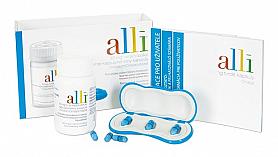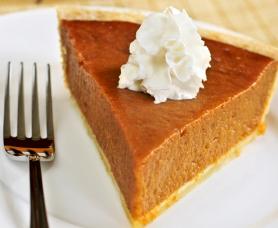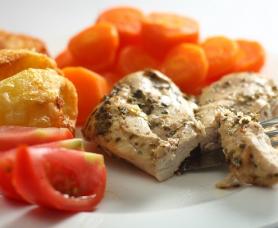Remember being a kid in a grocery store and picking out a cereal based on the toy or gadget offered inside the cereal box? Me neither…
It was the sale price that determined my parents choice of breakfast cereal to purchase and stock boys beware if there wasn’t a limit on the number of boxes one could purchase!
[When eating cereal, breathing is completely optional. Inhalation is the preferred method. Kudos to TheShoppeDenver for the photo and fresh pastry ideas.]
Based on some new research from the University of Scranton in Pennsylvania there’s another reason to stock up on cereal.
Professor Vinson and his team of researchers have found that nearly all whole-grain breakfast cereals and many common whole-grain snacks contain high levels of polyphenols.
Polyphenols Explained
Polyphenols occur naturally in plants and are the most abundant antioxidant and is thought to have major health benefits. They have anti-inflammatory properties, and scientists believe they may reduce the risk of cardiovascular disease, cancer and other illnesses.
The Devil is in the Details
This study included tests on more than 30 brands and types of breakfast cereals found in supermarkets.
Unfortunately the professor declined to name the brands included in the test (although Raisin Bran did get a suspicious plug later on as being the breakfast cereal with the most Polyphenols).
Is this a good thing?
Maybe, or maybe not.
It raise questions for me like:
Did they use the most popular breakfast cereals, which tend to be the ones laced with sugars and artificial flavors?
Did they use the most nutritional breakfast cereals to pad their stats on the positive findings?
I’m sure their are other questions racing through your head and I strongly encourage you to let them race. Questioning is a good exercise. Don’t let media or anyone else tell you should accept something as true and concrete. Always raise your “Spockian” eyebrow.
One question I’ll put to rest is the obvious funding question. Professor Vinson has stated no food industry money was provided for this study.
What’s the point?
The study’s main punch line contends that because whole grains are the main source of polyphenols in breakfast cereals (and nearly all cereal contains at least some whole grains) consumers should consider making cereals a regular part of their diet.
Stinson supports his suggestion by stating whole-grain products having comparable antioxidants per gram to fruits and vegetables.
My Breakfast Cereal Experiences
I won’t lie, this study is compelling personally since breakfast cereals were my main source of morning nutrition during childhood and sometimes a lunch, dinner or basically any time I was hungry kind-of-meal throughout my teens. But maybe that’s the point!
Cereals are an easy target food for overeating. Seriously, look at the steps required. Pour cereal and milk into bowl and insert spoonful in mouth? Way to easy!
And how many of us follow the suggested serving size on the nutrition label. I know guys who ate cereal from salad bowls. Seriously!
What to do About Breakfast Cereals?
Some breakfast is better then no breakfast, and skipping out on breakfast regularly (outside of intermittent fasting) is a dangerous idea. Like all foods, it’s all about moderation and serving sizes. Have a bowl and then pack it up.
Keep an eye on the labels as well. Sugars and artificial flavors of all kinds can quickly kill any benefits in cereals. Some cereals are better and some are worse in this respect. I’ve had great success with bran types of cereals but before you dismiss them as boring, read on.
Add nuts, raisins, dried fruit, and fresh fruit to your cereals. I have complete control over of how much or how little I want of each. Spices like cinnamon are also another popular addition and have been known to increase polyphenol content as well.
For more ideas about nutrition and healthy eating, check out The Truth About Six Pack Abs Review. You will find nutrition guidelines, eating habits and need-to-know information regarding your body and why the majority of people trying to lose weight fail miserably.
To Find A Fat Loss Program that’s right for you, click the button below:
























I think that this is some great information, especially because cereal is in my top 5 of favorite foods of ALL time. I look for 3 things when picking out cereal: Carb#, Sugar#, and Sodium count. I try to keep those numbers as low and as even as possible.
Rahim,
Those are great guidelines to follow.
May I also suggest you pay attention to the serving size as well. I’ve found three different sizes just with the cereal boxes in my house alone (ie. per 1 cup, per 1/2 cup, per 3/4 cup).
Mike
I haven’t had cereal for a long time, but I agree with you that it is tempting to go back to eating cereal just because it’s so easy to prepare. Good post Mike!
-Rafi
Salad bowls of cereal? I have done that before many times! Makes a great post workout meal, especially when intermittent fasting.
Good post.
Brad
@Rafi - I probably have cereal twice a week, usually multi-grain cheerios or bran flakes with bananas and berries. The preparation is what makes it an easy target for over eaters.
@Brad - Yeah, pretty crazy when I look back. The problem with such a large serving was the amount of milk needed. Buying a cow probably would’ve made economic sense?
Mike
Hello Michael my question is about oats. I read somewhere that the oats that you cook quickly are high glycemic index. Is this true? Does that make them not so healthy then? I got a box recently that says you have to cook them for 2-5 minutes. Are there different types or something?
P.S. I’m Indian so did’nt eat much cereal or oats for breakfast - but I have been reading so much they seem like a healthy option.
[...] Searching For Gadgets, Toys and Antioxidants In Your Breakfast … [...]
[...] Searching For Gadgets, Toys and Antioxidants In Your Breakfast … [...]
Hello, I also love the Shrek movies, very good animation!
[...] unavailable tο paleolithic humans. Those foods include:SaltRefined SugarsGrainsProcessed foodsDairySaturated & Trans fatsHigh glycemic carbs (refined grains [...]